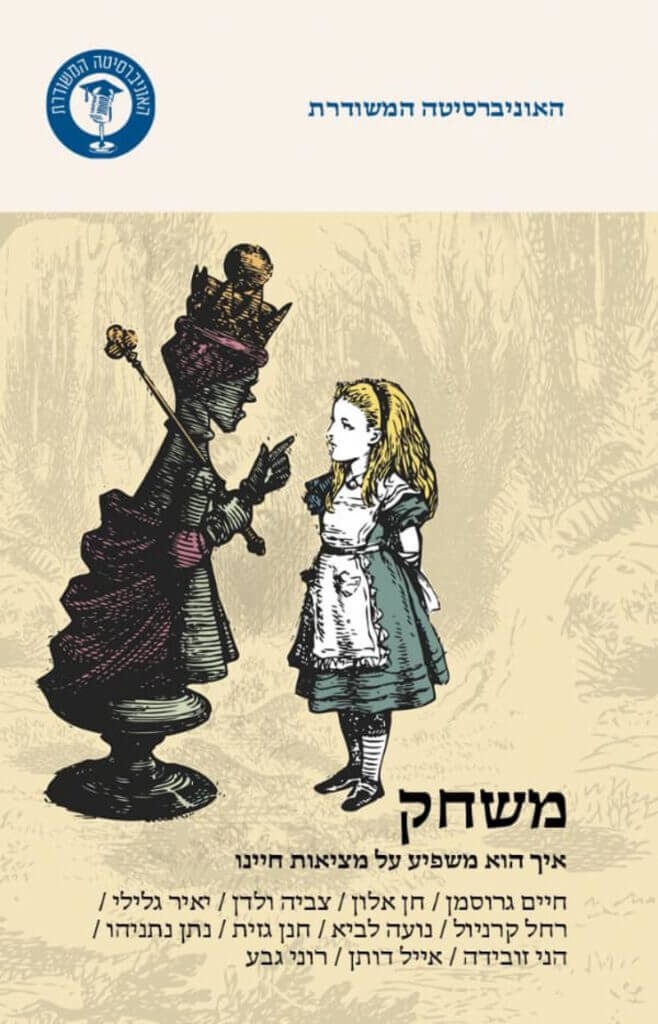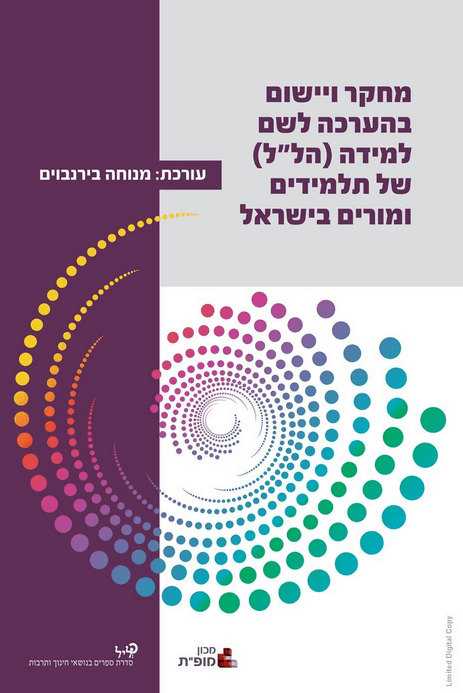פרסומים
פרסומים נבחרים פרי עטי שפורסמו בספרים, כתבי- עת מדעיים ובאתרי חדשות מובילים

פרק בספר: משחקי מחשב ומִשְׂחוּק (2021)
בספר ׳משחק איך הוא משפיע על חיינו׳ שיצא לאור בהוצאת משרד הבטחון ומודן, תמצאו את הפרק שכתבתי 'משחקים דיגיטליים ומשחוק'. מה זה חקר משחקים וידאו, משחוק וחקר משחקים דיגיטליים. איך מדיום הגיימינג מעצב ומשפיע על כל תחומי חיינו. הפרק מבוסס על הרצאה שהעברתי במסגרת תוכנית הרדיו 'האוניברסיטה המשודרת' ששודרה בגל"צ בנושא ׳משחק: מסע סביב רעיון׳.
תקציר הספר:
המאמרים המופיעים בספר משחק מתבססים על סדרת הרצאותיהם של מומחים שונים ששודרו במסגרת 'האוניברסיטה המשודרת' בגלי צה"ל. כל כותב מביט על משחקים מנקודת המבט של תחום התמחותו. “צריך לחיות את החיים כמשחק", כתב אפלטון, אולם בדרך כלל אנו חושבים על משחק כעל פעילות המנותקת מעולם המציאות. בתיאטרון, למשל, השחקנית נכנסת לנעליה של דמות, שהתנהגותה מוכתבת; במשחקי "כאילו" אצל ילדים, הילדים מפעילים את הדמיון שלהם ובוראים יקום חלופי; במשחקי מחשב יכול המשתתף לבחור אווטאר ולצלול עימו לשלל ממלכות הפנטזיה. ואולם, כל צורות המשחק הללו חושפות תופעה מפתיעה: במקרים רבים המשחק הוא הכנה והקניית מיומנויות לפעולות במציאות. למשל, הקניית שליטה בשפה דרך משחקי לשון, שיפור יכולות מוטוריות בעקבות משחקים ספורטיביים, פיתוח חשיבה אנליטית ויכולת ניתוח מורכבת באמצעות משחק השחמט. כמו כן, ליכולת לדמיין ולשחק בדרכים שונות יש השפעה רבה על מציאויות שונות: למשל, איך להגיע להחלטה באיזו מפלגה לבחור בבחירות. קריאת הספר הזה תשנה לפיכך לא רק את הבנתנו בנוגע למשחק, אלא גם לגבי המציאות. כותבי המאמרים הם ד"ר חיים גרוסמן ז"ל, ד"ר חן אלון, פרופ' צביה ולדן, פרופ' יאיר גלילי, פרופ' רחל קרניול, ד"ר נועה לביא, ד"ר חנן גזית, פרופ' נתן נתניהו, ד"ר הני זובידה, ד"ר אייל דותן ופרופ' רוני גבע.
מאמר אורח: איך מותגים יצליחו בעידן הגיימינג? (2021)
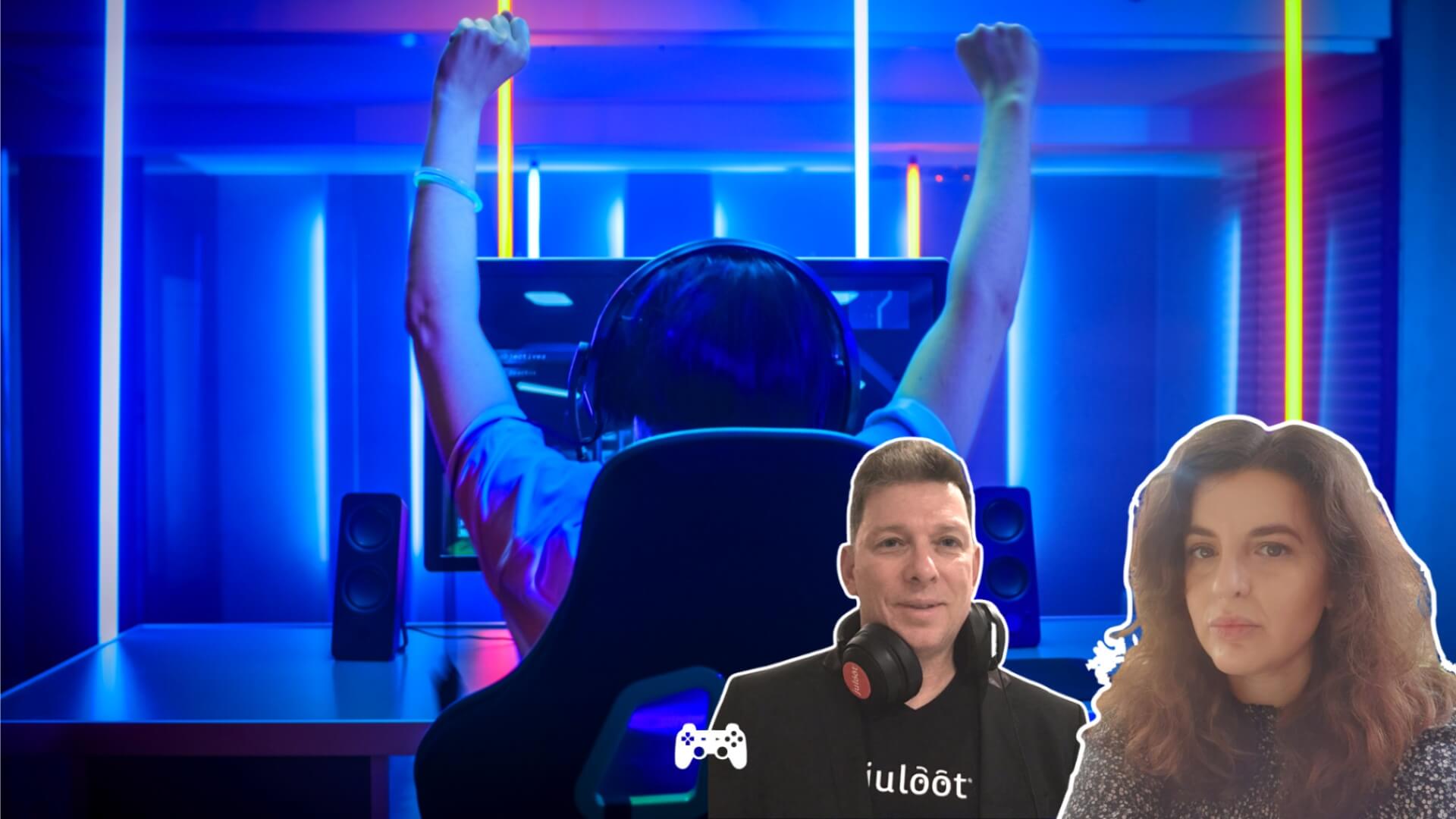
באתר מנהלי שיווק מצייצים – קהילת השיווק של ישראל תמצאו מאמר שכתבתי יחד עם בלה וורוביוב, M.A בייעוץ ופיתוח ארגוני. מנהלת את תחום הדאטה, נכסים דיגיטליים ומדיה בחברת טבע ישראל.
מתוך המאמר:
בסוף שנת 2023 צפויים להיות בעולם שלושה מיליארד גיימרים. כ-39% מאוכלוסיית העולם ישחקו במשחקי וידאו במחשב, במשחקי מובייל ובקונסולות ייעודיות. נכון לכתיבת שורות אלה, התחזית היא שבשנת 2023, שוק הגיימינג צפוי להניב 204.6 מיליארד דולר, על פי נתוני חברת המחקר ניוזו….
עם נתונים כאלו, לא פלא שמנהלי שיווק רבים מגלים את מדיום הגיימינג, שנראה זר וחדש, ולא בהכרח נתפס כפלטפורמה שיווקית. לצד ההבנה שיש צורך "להיות שם", או לפחות לבדוק את הרלבנטיות העסקית, עולה שאלת מיליון הדולר: "איך?" *כמובן שהצורך מאד תלוי במאפיינים של מותג, תקציב, אסטרטגיה.
לתפיסתנו, האתגר המרכזי שעומד בפני מנהלי שיווק בחיבור עם מדיום הגיימינג, הוא בעיקר אתגר תפיסתי. המפתח להצלחה הוא בתובנה שהכול מושתת על עקרונות ומתודולוגיה מוכרים ומבוססים, יחד עם הבנה מעמיקה של הייחודיות הטמונה בו.
פרק בספר: הל״ל ומשחוק – הֲיֵלְכוּ שְׁנַיִם יַחְדָּו בִּלְתִּי אִם נוֹעָדוּ? (2018)
בספר מחקר ויישום בהערכה לשם למידה (הל"ל) של תלמידים ומורים בישראל ׳שיצא לאור בהוצאת מופ"ת תמצאו את הפרק שכתבתי יחד עם דפרופ' מנוחה בירנבוים. הפרק מציע נקודת מבט חדשה על עולם הגיימינג, המשחוק ולמידה בתוך המטאוורס. הוא מציע כיוון עתידי: שדרוג ההל״ל באמצעות שילוב עקרונות המִשׂחוּק (gamification) והתבססות עליהם במטרה לטפח פעלנות יוזמת (פ”י) (agency) ומוטיבציה של לומדים בסביבות למידה היברידיות ועולמות וירטואליים.
תקציר הספר:
עמידה ביעדי החינוך במאה ה-21 מחייבת שינוי פרדיגמות בהוראה ובהערכה: מהתמקדות בהוראה להתמקדות בלמידה; ומהתמקדות בהערכה כמדידה להתמקדות באבחון הלמידה לשם שיפורה. הערכה לשם למידה (הל״ל) (assessment for learning) היא גישת הערכה הקשרית התואמת את הפרדיגמות החדשות, והיא העומדת במרכז אסופת מאמרים זו.
מאמר בדה מארקר (2008): נסיעת מבחן בכלכלת ה – Metaverse
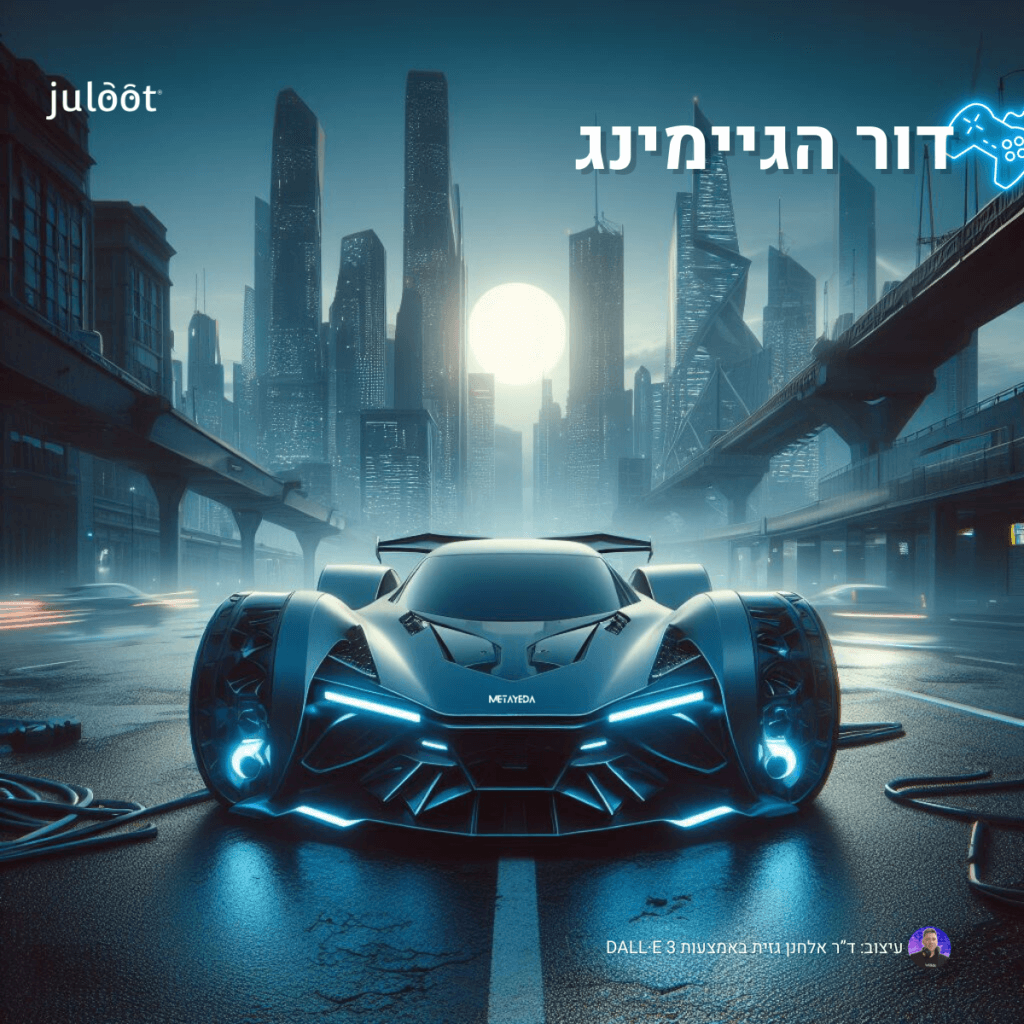
מתוך מאמרי "נסיעת מבחן בכלכלת המטאוורס":
מה אתם באמת יודעים על כלכלת עולמות וירטואליים? למעלה מ-2.1 מיליארד דולר אמיתיים הוצאו על רכישת מוצרים וירטואליים במהלך השנה החולפת. וזו רק ההתחלה
מאמר ויינט (2007): מה יכול עולם העסקים ללמוד ממשחקי תפקידים ברשת?
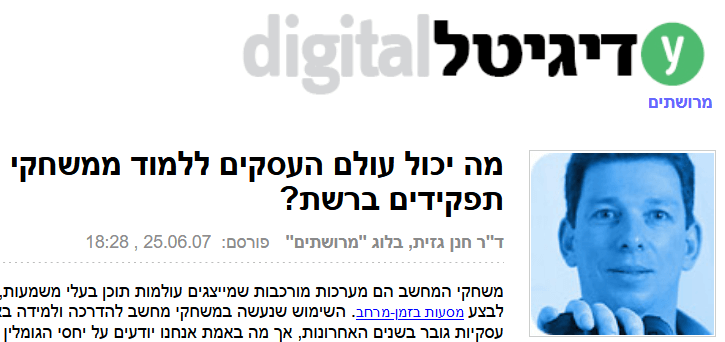
במאמרי "מה יכול עולם העסקים ללמוד ממשחקי תפקידים ברשת? בבלוג מרושתים של ווינט, אני יוצא מהנחת היסוד שמשחקי המחשב הם מערכות מורכבות שמייצגים עולמות תוכן בעלי משמעות. בעולמות אלה ניתן לבצע מסעות בזמן-מרחב וסימולציות.
השימוש שנעשה במשחקי מחשב להדרכה ולמידה בארגונים וחברות עסקיות גובר בשנים האחרונות, אך מה באמת אנחנו יודעים על יחסי הגומלין שבין עולמות משחקי המחשב הוירטואליים לבין העולם האמיתי? האם משחק מחשב יכול לסייע בשיפור מיומנויות הניהול והמנהיגות העסקית גם בעולם האמיתי? לינק
בספר: WOW הסוד למצגות מנצחות והרצאות בלתי-נשכחות (2017)

בספר WOW הסוד למצגות מנצחות והרצאות בלתי-נשכחות שיצא לאור בהוצאת גיל פרץ וזכה במימון חכמת ההמונים, תמצאו את תרומתי לפיצוח סוד מצגות והרצאות מנצחות. בפרק 34 הטכנולוגיה של ה"וואו" אני משתף בידע שלי על הגברת אינגייג'ימנט וה- FUN-TICIPATION של קהל המשתתפים בכנס מנהלים עם אפליקציות משחוק.
גיימיפיקיישן של הרצאות למנהלים הפרך מ- "NICE TO HAVE" לצורך אמיתי, מאז פרוץ משבר הקורונה העולמי. זאת בשל הצורך לפתור את בעיית העייפות והשיעמום שכולנו חווים בתוך המסכים המרובעים בזום -ZOOM.
Book Chapter: The Learners' Isle: A Multi-User Virtual Environment to Foster Learner Agency and Motivation (2018)
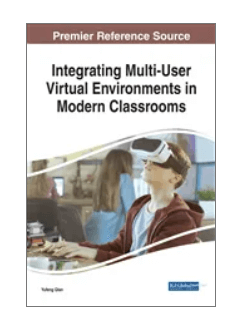
The Book Chapter " The Learners' Isle: A Multi-User Virtual Environment (MUVE) to Foster Learner Agency and Motivation" I wrote together with with Prof. Birenbaum, main aim is to promote learner agency and motivation by engaging students in authentic and challenging learning experiences aligned with educational goals to foster twenty-first century competencies. The vision and framework include:
Principles of assessment for learning (AfL) and gamification are integrated to design a MUVE governed by students. The students will engage in learning, assessment, and instruction-related activities. They will also initiate, manage, and monitor the activities. The relationship between The Learners' Isle virtual environment and the physical classroom environment will be complementary and reciprocal. The teacher (a digital immigrant) and the students (the digital natives) will be partners in the teaching-learning process. The design principles of The Learners' Isle, a scenario to illustrate blended learning, and its conceptualization through an activity theory framework will be presented. In addition, the chapter discuss the educational context characteristics conducive to successful implementation of the MUVE. Link.
Book Chapter: A window on digital games interactions in home settings (2009)
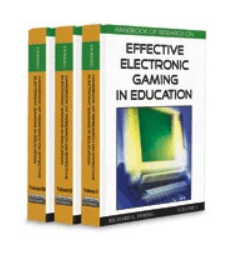
My Book Chapter "A window on digital games interactions in home settings" published in Handbook of Research on Effective Electronic Gaming in Education presents an analysis of the dynamics of children’s digital games interactions, which take place in their home surroundings, based on empirical case study.
Since digital games have become one of the main building blocks in children’s world, there is a need to examine the impact of the widespread use of digital games in children’s everyday life.
The study’s framework served as a window for close observation of the ways young children spontaneously play digital games and interact with each other. Theoretical implications for digital games research and the pedagogical implications regarding the design and implementation of interactive learning environments are discussed.
In addition, there are methodological challenges of finding new pathways for studying the complex relationships between digital games and real-world learning interactions. The study’s findings and their implications could serve as a small step in perusing these challenges. link
Article: The gain and pain in taking the pilot seat: learning dynamics in a non immersive virtual solar system (2006)
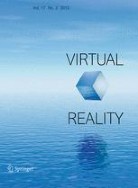
This study describes and analyzes the learning interactions of nine high-school students’ free exploration of a virtual solar system (VSS). The VSS is a non-immersive three dimensional virtual environment based on real NASA planetary images. The computer screen serves as a “spacecraft’s window” for the learner to “fly” between objects, to change the system’s frame of reference and its pace. A systematic analysis of participants’ real-time observable interactions together with what they said revealed that each of them created an unique learning pattern within at least five different dimensions: (1) the cognitive dimension, (2) the affective dimension, (3) the navigation dimension, (4) the interface dimension, and (5) the assistance seeking dimension. The construction of meaning emerged as a non-linear process, which includes transitions between and within these dimensions. Three different styles of learning interactions were identified, suggesting that individual differences might be enhanced due to the unique VSS’ features. Overall, the VSS served as an enriching and motivational learning experience. The design of additional navigation tools and content scaffolding might help participants’ in building a sustained deep scientific understanding. Link
Conference Paper: Enhancing Social Communication Through Story-Telling Among High-Functioning Children with Autism (2005)
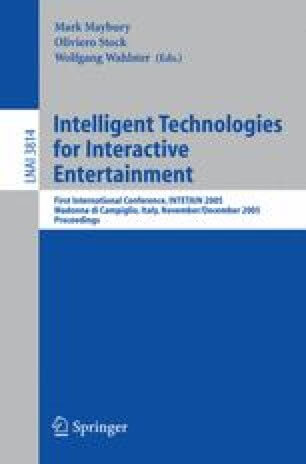
In INTETAIN 2005 Conference paper we describe a first prototype of a system for storytelling for high functioning children with autism. The system, based on the Story-Table developed by IRST-itc, is aimed at supporting a group of children in the activity of storytelling. The system is based on a unique multi-user touchable device (the MERL Diamond Touch) designed with the purpose of enforcing collaboration between users. The instructions were simplified in order to allow children with communication disabilities to learn and operate the story table. First pilot results are very encouraging. The children were enthusiastic about communicating through the ST and appeared to be able to learn to operate it with little difficulty. Link
Article: Using the observer to explore learning within virtual worlds (2003)
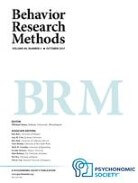
In this study, we describe and analyze the ways in which high school students explored a virtual solar system (VSS). VSS is a non-immersive virtual environment that affords visual manipulations of space by altering its frame of reference. The Observer software was used to code and analyze the participants’ real-time free-exploration task. Two basic behaviors were identified across participants: establishing several home bases, and shifting between a still mode and a dynamic mode. Moreover, three overall exploration patterns emerged: the butterfly pattern represents a superficial mode of learning; the bee pattern represents an in-depth mode of studying the various celestial objects; and the eagle pattern represents a global approach of studying the complex system. This virtual reality environment promises to provide a setting in which to further study consistent patterns and individual differences in exploration strategies. Link

בפרופיל גוגל סקולר שלי תמצאו למעלה ממאה מאמרים בכתבי עת ופרזנטציות בכנסים ואירועים בינלאומיים
ראיונות וכתבות בתקשורת לפי מועד פרסומם:
יעודכן בקרוב.
מקורות נבחרים לפי מועד פרסומם:
גזית, ח. (2021). משחקי מחשב ומִשְׂחוּק, בתוך: דורון, א' (עורכת): משחק איך הוא משפיע על מציאות חיינו, פרק 7 (עמ׳ 112-89). הוצאת מודן, האוניברסיטה המשודרת ומשרד הביטחון.
גזית, ח' (2019). "פורטנייט: הטוב, הרע והמכוער", הרצאה במסגרת יום העיון: הקריז הדיגיטלי – התמכרות למשחקי מחשב גורמי סיכון, 'אבחון וטיפול, המרכז הרפואי לגליל נהריה, נהריה, 25 במרץ 2019. אוחזר מתוך ערוץ יוטיוב juloot
וורוביוב, ב',. גזית, ח'. (2021, 3 ביוני).איך מותגים יצליחו בעידן הגיימינג? מנהלי שיווק מצייצים – קהילת השיווק של ישראל. אוחזר מתוך: https://shivuk.me/articles/20717
בירנבוים, מ',. גזית, ח'. (2018). הל״ל ומשחוק – הֲיֵלְכוּ שְׁנַיִם יַחְדָּו בִּלְתִּי אִם נוֹעָדוּ? בתוך: בירנבוים, מ׳ (עורכת): מחקר ויישום בהערכה לשם למידה (הל"ל) של תלמידים ומורים בישראל, ע"מ 285-305. בהוצאת מכון מופ"ת – בית ספר למחקר ולפיתוח תוכניות בהכשרת עובדי חינוך והוראה במכללות., תל-אביב. אוחזר מתוך: https://store.macam.ac.il/store/books/3232
גזית, ח'. (16 ביולי, 2017). על משחוק ומשחקי מחשב, תוכנית הרדיו של גל"צ: האוניברסיטה המשודרת: מסע סביב רעיון – משחק. לינק
גזית, ח'. (2017). איך מניעים לפעולה בהנאה בהרצאות למנהלים עם אפליקציות משחוק?, בתוך: פרץ, ג' (עורך): WOW הסוד למצגות מנצחות והרצאות בלתי-נשכחות. ע"מ 153. בהוצאת גיץ פרץ.
לביא, ז',. גזית, ח'. (2012). ניהול משברים בגילדה (וורלרד אוף וורקראפט) כמקרה מבחן לניהול משברים בארגונים, בתוך: יאיר, י', שמואלי, א' (עורכים): עולם המידע הפתוח הוראה מתוקשבת בחינוך הגבוה – ספר הכנס השנתי העשירי של מיט"ל ע"ש פרופ' נחמיה לבציון ז"ל , (עמ' 66-73), מכון ויצמן למדע, רחובות, 10 ביולי 2012.
גזית, ח'. (2008, 9 בינואר). נסיעת מבחן בכלכלת המטאוורס (Metaverse). דה מארקר. אוחזר מתוך: https://www.themarker.com/technation/2008-01-09/ty-article/0000017f-ee4d-d4cd-af7f-ef7d7e4e0000
גזית, ח'. (2008). ווב Web3D עולמות וירטואליים בהשכלה הגבוהה: פוטנציאל אמיתי או רק אשליה בתוך: בן צבי, ד' (עורך): חדשנות בהוראה מתוקשבת בחינוך הגבוה – ספר הכנס השנתי השישי של מיט"ל ע"ש פרופ' נחמיה לבציון ז"ל, (עמ' 7-8), אוניברסיטת חיפה, חיפה, 8 באוגוסט 2008. אוחזר מתוך: https://www.academia.edu/5734302/Innovative_E-learning_in_higher_education_In_Hebrew_
גזית, ח'. (2007, 25 ביוני). מה יכול עולם העסקים ללמוד ממשחקי תפקידים ברשת? ויינט, אוחזר מתוך: https://www.ynet.co.il/articles/0,7340,L-3417336,00.html
גזית, ח'. (2006). משחקי מחשב ככלי הדרכה, למידה והערכה, בתוך: הכט, י' (עורך): השפעת האינטרנט, טכנולוגיות המיחשוב ויישומיהן לניהול משאבי אנוש והדרכה – משאבי אנוש, 225-6, ע"מ 32-37.
Birenbaum, M., & Gazit, E. (2018). The Learners' Isle: A Multi-User Virtual Environment to Foster Learner Agency and Motivation. In Y. Qian (Ed.) Integrating Multi-User Virtual Environments in Modern Classrooms (pp. 240-258). Hershey, PA: IGI Global. https://doi:10.4018/978-1-5225-3719-9.ch011
Lavee, Z., & Gazit, E. (2012). World of Warcraft (WOW) Guild conflict management insights for organizations leadership building. In: In: Yair, Y., & Shmueli, E. (Eds.) Proceedings of the 10th Annual Conference of MEITAL-The Israeli Inter-University Center for E-Learning (IUCEL), (pp. 66-73). Weizmann Institute of Science, Rehovot, 10th of July, 2012. (Hebrew).
Gazit, E. (2009). A window on digital games interactions in home settings. In: Ferdig, R. E (Ed.) Handbook of Research on Effective Electronic Gaming in Education, Vol 1, (pp.127-145). IGI Global Press. https://www.igi-global.com/chapter/window-digital-games-interactions-home/20083
Gazit, E., Yair, Y., & Chen, D. (2006). The gain and pain in taking the pilot seat: Learning dynamics in a non-immersive virtual solar system, Virtual Reality, 10 (3-4), 271-282. https://doi.org/10.1007/s10055-006-0053-3
Gazit, E., Yair, Y., & Chen, D. (2005). Emerging conceptual understanding of complex astronomical phenomena by using a virtual solar system, Journal of Science Education and Technology, 14 (5-6), 459-470. https://doi.org/10.1007/s10956-005-0221-3
Gal E. et al. (2005) Enhancing Social Communication Through Story-Telling Among High-Functioning Children with Autism. In: Maybury M., Stock O., Wahlster W. (Eds) Intelligent Technologies for Interactive Entertainment. INTETAIN 2005. Lecture Notes in Computer Science, vol 3814. Springer, Berlin, Heidelberg. https://doi.org/10.1007/11590323_43.
Gazit, E. (2005). Gazit, E. (2005). A Virtual Journey in the Solar System: Learning interactions in virtual reality environments. An unpublished Dissertation for the Degree of “Doctor of Philosophy”. The School of Education, Tel-Aviv University, Israel. (Hebrew)
Gazit, E. & Chen, D. (2003). Using the observer to explore learning within virtual worlds. Behavior Research Methods, Instruments and Computers, 35 (3), 400-407. https://doi.org/10.3758/BF03195517

